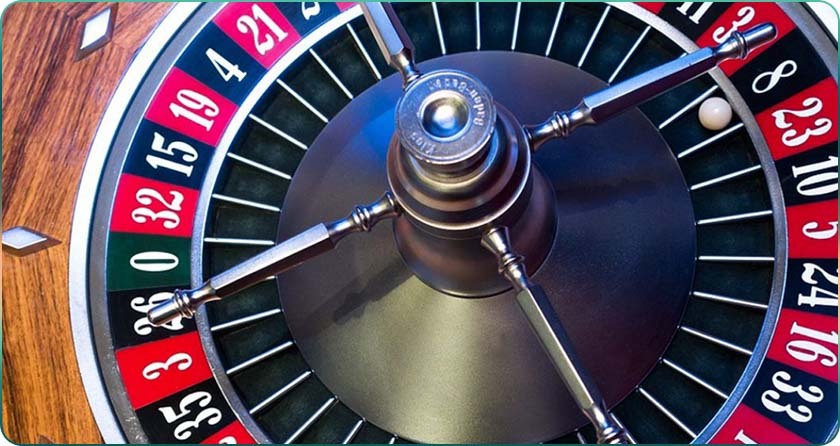D'Alembert System's Strategic Approach to Roulette Gambling

One of the most popular betting systems in roulette – perhaps the most used after the Martingale is the so-called D’Alembert system. Its popularity is due to the easiness of applying it, but also because it does not carry a high risk, like the Martingale.
The system is named after the 18th-century mathematician Jean-Baptiste le Rond d’Alembert and falls within the category of the negative progression systems. A progressive system is a succession of static bets stretching over several rounds (spins), whose stakes are changed with every new round, depending on the result of the previous spin.
A negative progression system is one in which you increase stakes when you lose or decrease stakes when you win. You don’t have to be a mathematician to apply the D’Alembert system in roulette. Let’s see further how the D’Alembert system works and what the rationale is behind its rules.
How Does the D’Alembert System Work?
First, note that the D’Alembert system works well for casino games other than roulette, namely those having even money bets or almost even money bets in their rules, like blackjack, baccarat, or even sports betting. However, it is most suitable for the mathematics of roulette (like other progressive systems) just because of the brevity of the game (a roulette round, including placing the bets and the spin, takes less time than in other games, and this allows more steps in the system to be taken during a given session).
In the D’Alembert system, you place even-money bets, like the Red/Black, High/Low, or Odd/Even bets (I will explain this choice later). It does not matter which of these bets are chosen and not whether you keep one type of bet for the entire session or change it or alternate the bets, as long as it is an even money bet.
You have to choose one unit for your stakes. Let’s say it is 1 (one chip or one in whatever currency), but it could be of any value (this, of course, depends on your bankroll).
The driving rule of the system is to increase the stake by one unit after each bet is lost and decrease it by one unit after each bet is won. When the number of your lost bets equals the number of the bets you won, you will be in profit with the amount given by that number of bets. Let’s see why this happens.
The Math behind the D’Alembert System
To see what happens when betting with the D’Alembert system, let’s take an imaginary example:
Say your first bet has a stake of $6, and the chosen unit is 1.
- Step 1. Bet $6 and lose. Your current loss is $6, and you recorded 1 loss and no win. Increase your stake by 1: $6 + $1 = $7.
- Step 2. Bet $7 and lose. Your current loss is $6 + $7 = $13, and you recorded 2 losses and no win. Increase your stake by 1: $7 + $1 = $8.
- Step 3. Bet $8 and win. Your current loss is $13 – $8 = $5, and you recorded 2 losses and 1 win. Decrease your stake by 1: $8 – $1 = $7.
- Step 4. Bet $7 and lose. Your current loss is $5 + $7 = $12, and you recorded 3 losses and 1 win. Increase your stake by 1: $7 + $1 = $8.
- Step 5. Bet $8 and lose. Your current loss is $12 + $8 = $20, and you recorded 4 losses and 1 win. Increase your stake by 1: $8 + $1 = $9.
- Step 6. Bet $9 and win. Your current loss is $20 – $9 = $11, and you recorded 4 losses and 2 wins. Decrease your stake by 1: $9 – $1 = $8.
- Step 7. Bet $8 and win. Your current loss is $11 – $8 = $3, and you recorded 4 losses and 3 wins. Decrease your stake by 1: $8 – $1 = $7.
- Step 8. Bet $7 and win. Your current profit is $7 – $3 = $4, and you recorded 4 losses and 4 wins.
At this point, your number of losses equals the number of wins (4), and your current profit is $4. You may end the system and replay it or leave with your profit.
In this example, it took 8 bets (steps) for the player to come to a profit, but it could take any number of bets, depending on the actual outcomes of the game (the system works even for the weirder versions of roulette). The math of the D’Alembert system says that whatever the number of bets, when the number of wins equals the number of losses, the player is always in profit with that number multiplied by the unit.
The arithmetic of the profit in our example above is: – 6 – 7 + 8 – 7 – 8 + 9 + 8 + 7 = 4 What characterizes the expression in the left-hand member is that it has an even number of terms, the negative terms and the positive terms are in equal number, and the absolute difference between any two consecutive terms (the module) is 1. The result of the expression is exactly half of the number of the terms (8: 2 = 4). We can see this if we group the terms conveniently each two, as follows: (7 – 6) + (8 – 7) + (9 – 8) + (8 – 7) = 1 + 1 + 1 + 1 = 4.
It’s a simple combinatorial exercise to show that, whatever long such an expression with those properties would be, such a grouping is always possible, and the sum of the parentheses would be 1 multiplied by their number, that is, half of the total number of terms.

Comparison between the D’Alembert System and the Martingale
As in the Martingale system or other progressive ones, the fact that the math is right does not guarantee that the system is infallible when applied and will always bring profit regardless of the outcomes of the roulette. The fact that the bankroll is always limited and long losing streaks are possible at any time to deplete the bankroll is certain. The D’Alembert system is far safer than the Martingale since the rate of increasing the stake is much lower. Let’s compare now the profit rates in the two systems.
In our example, the investment for the profit of $4 was $60, giving a rate of 6.66%. If we were to run the Martingale and had a sequence of 7 losses before the win (as long as the number of bets in our example), we would have had a rate of the profit of 1/255 = 0.39%, 17 times lower than for the D’Alembert example (255 comes from 1 + 2 + 4 + 8 + 16 + 32 + 64 + 128 = 255, the total investment in units of stake).
The only advantage of the Martingale over the D’Alembert system is that the former can recover the cumulated loss more quickly than the latter when a streak of losses occurs but at the cost of a higher risk for your bankroll. The quick recovery of the loss in that condition is also the reason why the Martingale has been designed as it is. Indeed, in Martingale, you have to wait for the first win to recover your loss, while in the D’Alembert system the wins have to equal the number of losses.
Balancing Risk and Reality
If a long streak of losses occurs or you see that recovering your previous loss is harder than anticipated, you have to resist the temptation of increasing your stake beyond the D’Alembert system’s rules; otherwise, the system will not work, and you are just increasing your risk.
This “golden condition” of the D’Alembert system of having an equal number of losses and wins seems to be easily attained since the probability of winning any even money bet is close to 1/2, which implies the expectation for the winning and losing outcomes to balance cumulatively in the long run. This probability is also the reason that the D’Alembert system requires even money bets for it to be effective, as for bets with unbalanced probabilities (winning/losing), the likelihood for an equal streak or wins and loses to occur over a reasonable number of bets gets lower.
In fact, they say that D’Alembert’s belief was that, for even money bets, any streak of losses comes to be balanced by forthcoming wins, and conversely, this was the reason he conceived his system as it is. While today it is well known that such belief falls within a cognitive distortion called ‘The Gambler’s Fallacy’ and it’s hard to believe that a mathematician (even in the 18th century) was subject to such a fallacy, the math behind the D’Alembert systems remains right even if that was the case with D’Alembert.
- Easy to understand and apply
- Low rate of increasing the stake (low risk)
- It gives good control over your bankroll, and you don’t need large bankrolls to run it
- It does not face the issue of table limits
- Requires keeping a record of losses and wins
- Hard to recover loss after a streak of losses
- Relatively low profit rate
Final Thoughts
In conclusion, the D’Alembert system is a negative progression low-risk system, safer than other systems and far safer than the Martingale. This makes it suitable for low to medium bankrolls. It comes with a relatively low-profit rate, but this characterizes all progressive systems. Recovering the cumulated loss requires some patience; however, long losing streaks may always damage your bankroll and delay the moment when the number of wins equals that of losses.
The bankroll constraint prevents the system from being infallible, which stands for every progressive system. Given it is an easy-to-apply system, it is recommended to roulette beginners and to those beginning to try progressive systems.





Review this Blog
Leave a Comment
User Comments
comments for D'Alembert System's Strategic Approach to Roulette Gambling